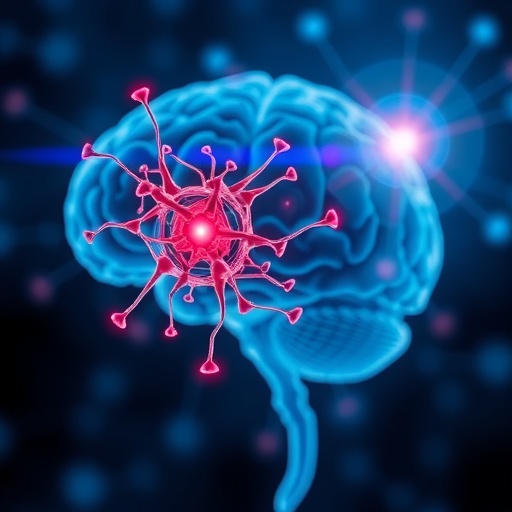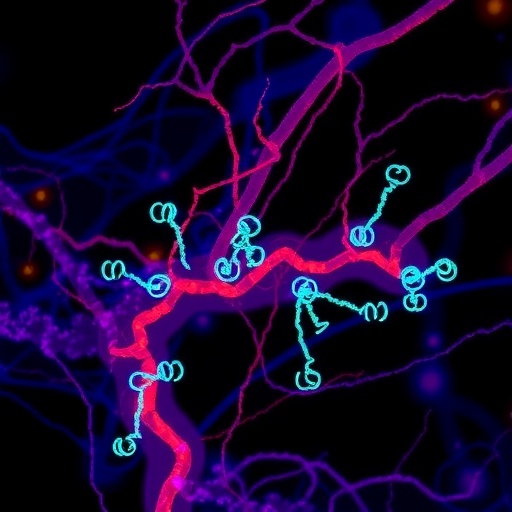
In an incredibly transformative era for biomedical science, the field of cell transplantation within the nervous system has rapidly evolved, presenting unprecedented opportunities and challenges. Recent research spearheaded by I.G. Cozzone, V.L. Ortega, and C.M. Dumont, published in Current Transplantation Reports, emphasizes the development of engineered tools aimed at making cell transplantation a viable clinical reality. Their comprehensive study not only elucidates the critical importance of advancing these techniques but also delves into the technical nuances that could propel this field forward, addressing both the promise and hurdles of implementing cell therapies for neurological disorders.
Cell transplantation represents a revolutionary approach to combat neurological diseases, including neurodegenerative disorders and spinal cord injuries. The potential to replace damaged or lost neurons with healthy, functionally active cells could lead to remarkable improvements in patient outcomes. However, translating the capabilities of laboratory findings into clinical applications necessitates an intricate understanding of various biological processes and engineering principles. The study highlights the need for innovative technologies that can optimize the survival, integration, and function of transplanted cells within the complex milieu of the nervous system.
One of the central challenges faced in cell transplantation is the effective delivery of therapeutic cells to the target site within the nervous system. Traditional methods often fall short of ensuring precise placement and retention of the cells, leading to poor outcomes. Cozzone and colleagues explore advanced delivery systems, such as microfluidic devices and biomaterials, which can enhance the precision of cell placement. These engineered tools not only allow for targeted delivery but also provide a supportive environment that mimics the native tissue, facilitating better integration and function of the transplanted cells.
Furthermore, the study underscores the necessity of preconditioning the transplanted cells to enhance their survivability and performance post-transplantation. The researchers discuss various strategies, including genetic modifications and exposure to specific growth factors, which can be deployed to improve the resilience of the cells against the hostile microenvironment commonly found in damaged neural tissues. By employing these techniques, it may be possible to enhance the therapeutic efficacy of cell transplants, thus increasing their potential to truly regenerate the injured nervous system.
In addition to cellular engineering and delivery methods, the paper also examines the role of immunogenicity in cell transplantation. The immune response can pose a significant barrier to the success of cell therapies, as transplanted cells may be recognized as foreign entities by the host immune system. The authors propose novel immunomodulatory approaches that can be incorporated into cell transplantation protocols. By creating an immune-tolerant environment, these strategies could significantly enhance the survival of transplanted cells, ensuring they successfully integrate into the existing neural architecture.
The findings in this groundbreaking research are particularly pertinent to the treatment landscape for diseases like Parkinson’s and Alzheimer’s, where cell replacement strategies have shown exceptional promise in preclinical models. By engineering tools that proficiently address the delivery and integration of donor cells, researchers are paving the way for clinical trials that could ultimately change the trajectory of treatment for these debilitating conditions. This translational aspect of their work is crucial, as it highlights the urgency of bridging the gap between laboratory research and clinical implementation.
Moreover, the study emphasizes the need for interdisciplinary collaboration between biologists, engineers, and clinicians to refine these engineered tools. Innovations in materials science, such as the development of biodegradable scaffolds, can play a pivotal role in supporting transplanted cells while promoting tissue regeneration. The synergy between these diverse fields is essential to foster an environment conducive to the successful application of cell transplantation therapies.
The potential for engineered tools in cell transplantation is immense, but it is equally imperative to consider ethical implications and regulatory challenges associated with these innovative approaches. As the research indicates, moving towards clinical reality necessitates thorough evaluations of safety and efficacy through clinical trials. This emphasizes the importance of adhering to regulatory frameworks that govern the approval and use of cellular therapies, ensuring that patient safety remains paramount as we explore these groundbreaking advancements.
As researchers push the boundaries of what is possible in cell transplantation, the journey towards clinical application will require a sustained commitment to scientific rigor and innovation. Cozzone and her colleagues advocate for the establishment of collaborative networks that unite various stakeholders in the field, from academic institutions to industry partners. Such alliances are paramount for sharing knowledge, resources, and expertise to further propel this research area forward.
The study also highlights the growing interest in personalized medicine, where therapies can be tailored to individual patients based on their unique biological and genetic profiles. This approach could revolutionize the treatment of neurological diseases, as personalized interventions are more likely to succeed compared to standardized therapies. The introduction of engineered tools in this context allows for the customization of cell types and delivery methods, optimizing outcomes for each patient.
As we look toward the future, the potential applications of engineered tools extend beyond cell transplantation for neurological conditions. The principles and technologies being developed could potentially be adapted for use in other fields of regenerative medicine, including treatment for cardiac, liver, and other tissue-specific diseases. The versatility of these engineered approaches reinforces the exciting possibilities that lie ahead in the biomedical landscape.
In conclusion, the groundbreaking research conducted by Cozzone, Ortega, and Dumont represents a pivotal step toward making cell transplantation in the nervous system a clinical reality. Their emphasis on innovative engineering solutions demands attention and action from the scientific community. With collaborative efforts, a focus on personalization, and a commitment to addressing regulatory challenges, we are moving closer to realizing the full potential of cell therapies in treating neurodegenerative diseases and restoring hope for countless patients.
The authors’ work exemplifies the essence of scientific exploration, demonstrating that with ingenuity and persistence, the dream of effectively treating complex neurological conditions through cell transplantation can very much become a conceivable future. The integration of cutting-edge technology and scientific understanding has the power to reshape the landscape of medicine, offering a new lease on life to those affected by debilitating neurological disorders.
Subject of Research: Cell transplantation in the nervous system
Article Title: Engineered Tools to Advance Cell Transplantation in the Nervous System Towards a Clinical Reality
Article References:
Cozzone, I.G., Ortega, V.L. & Dumont, C.M. Engineered Tools to Advance Cell Transplantation in the Nervous System Towards a Clinical Reality.
Curr Transpl Rep 11, 222–232 (2024). https://doi.org/10.1007/s40472-024-00451-7
Image Credits: AI Generated
DOI: 10.1007/s40472-024-00451-7
Keywords: Cell transplantation, nervous system, engineered tools, clinical application, neurodegenerative diseases, immunogenicity, personalized medicine.
Tags: advancements in neurological disorder treatmentbiomedical innovations for neurodegenerative diseasescell transplantation in neurosciencechallenges in cell delivery systemsclinical applications of cell transplantationengineered tools for cell therapyimproving patient outcomes through transplantationintegrating transplanted neuronsoptimizing cell survival in transplantationresearch in cell therapy techniquesspinal cord injury treatment innovationstransformative technologies in biomedical science




